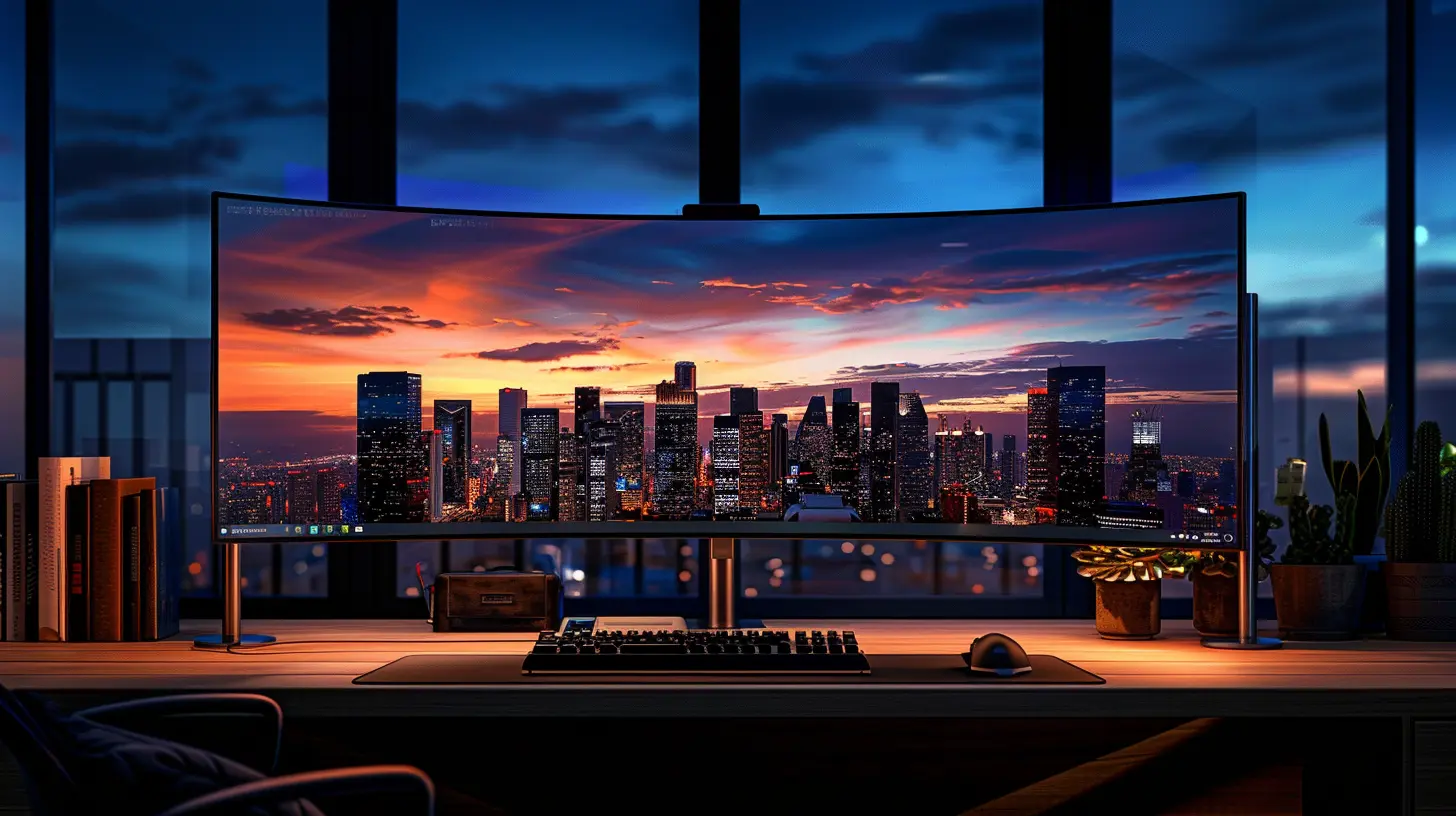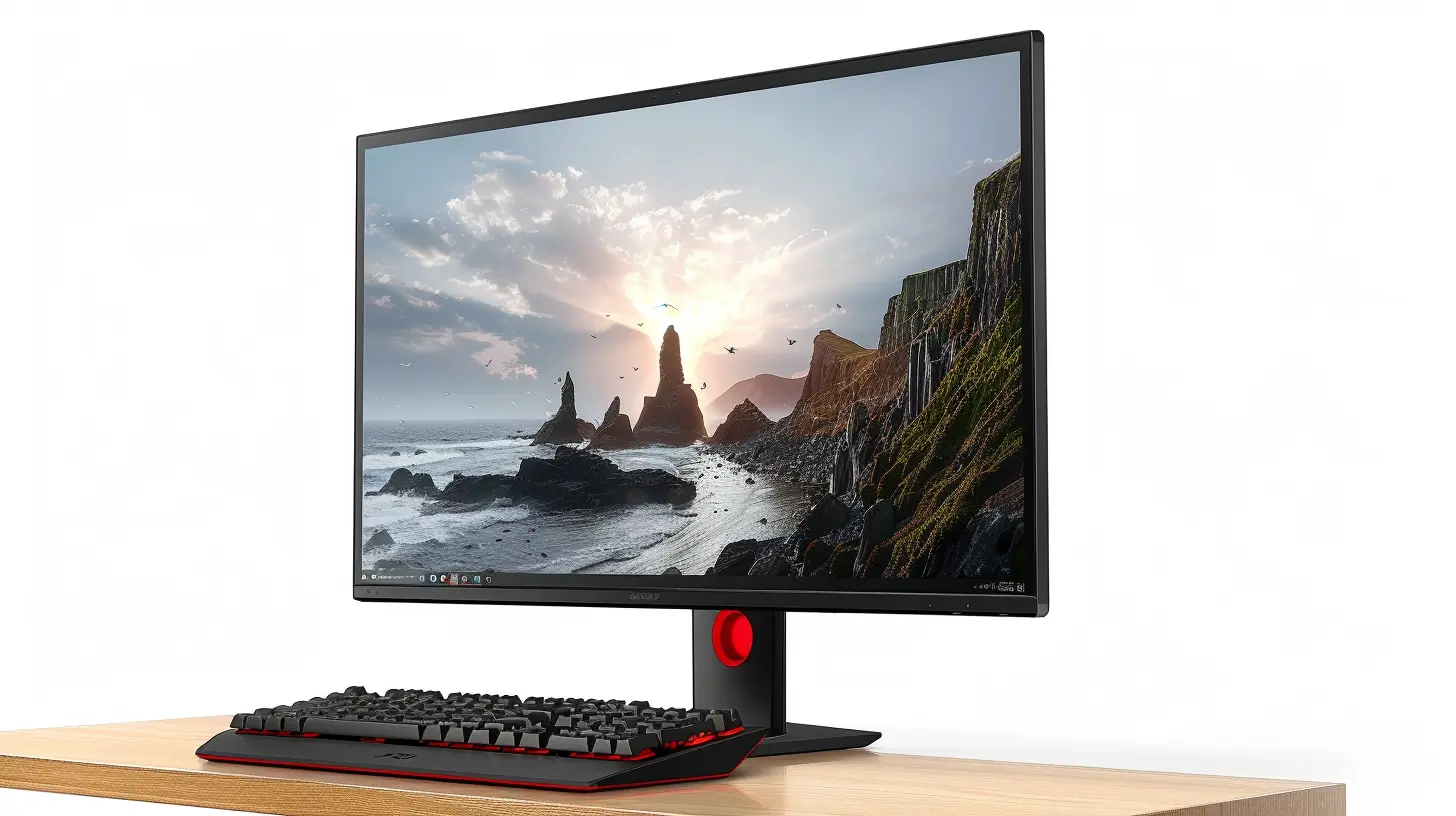10 February 2025
When it comes to gaming, there's always a shiny new toy or tech upgrade tempting you to open your wallet. Recently, 240Hz monitors have been stealing the spotlight and making gamers wonder: "Do I actually need this, or is this just another tech flex?" If you're asking yourself this question, you've come to the right place. Let’s break down everything you need to know about 240Hz monitors, their benefits, and whether they're necessary for your gaming experience.
What Does "240Hz" Even Mean?
Before diving into whether this tech is worth it, let’s tackle the basics. A monitor’s refresh rate, measured in Hertz (Hz), tells you how many times the screen refreshes per second. So, a 240Hz monitor refreshes its screen 240 times every second.For comparison:
- 60Hz: This is the standard for most office or budget displays.
- 120Hz / 144Hz: Popular among gamers for smoother gameplay.
- 240Hz: The new kid on the block, offering even smoother visuals and responsiveness.
Think of it like flipping through a picture book. The faster you flip, the more the pictures blur together and look like a smooth animation. Higher refresh rates make animations—like your game characters running or shooting—look buttery smooth. But does it really make a difference in how you play?
How Does a 240Hz Monitor Improve Gaming?
Here’s the real kicker: not all gamers will notice or benefit from the jump to 240Hz. Let’s break it down by what it actually improves:1. Smoother Gameplay
With a 240Hz monitor, you'll notice ultra-smooth animations. For instance, fast-moving scenes, like tracking an enemy in a fast-paced shooter, feel more fluid. The entire gaming experience can feel more immersive, like stepping into a better version of reality. If fluidity makes your heart sing, you’re going to love it.2. Reduced Motion Blur
Ever feel like your screen is smudging motion during high-speed sequences? (Looking at you, Call of Duty or CS:GO!) A higher refresh rate helps reduce that annoying motion blur, giving you a clearer picture of fast-moving objects. It’s like upgrading from driving a foggy windshield to crystal-clear glass.3. Lower Input Lag
While refresh rate isn't the only thing contributing to input lag, 240Hz monitors can improve responsiveness. Input lag is essentially the time it takes for your actions (like clicking a mouse or pressing a key) to show up on the screen. A 240Hz monitor makes the delay so minuscule that it feels like the game is reading your mind.
Do You Need a 240Hz Monitor? Let’s Be Real.
Alright, now for the million-dollar question: is a 240Hz monitor necessary? The answer depends a lot on who you are, how you game, and what kind of hardware you're working with. Let’s break it down.1. Are You a Competitive Gamer?
If you’re knee-deep in competitive gaming or play at an esports-level, then yes—a 240Hz monitor could give you that tiny, razor-thin edge. In FPS games like CS:GO, Valorant, or Overwatch, split-second reactions matter. The smoother visuals and lower input lag could mean the difference between landing a headshot and watching your character bite the dust.But if you’re more of a casual gamer, do you really need that cutting-edge advantage? Probably not.
2. Can Your PC Handle 240 FPS?
Spoiler alert: If your rig can’t pump out frames consistently above 144 FPS, you’re not going to see the benefits of a 240Hz monitor. Remember, the monitor can only display as many frames as your PC sends it. If your GPU is struggling to hit 100 FPS in most games, investing in a 240Hz monitor makes about as much sense as buying a sports car for bumper-to-bumper traffic.Check your PC specs and game performance before upgrading. If you’re not consistently pushing 200+ FPS in your favorite titles, a high refresh rate monitor might not be worth it.
3. Does It Fit Your Play Style?
Let’s be honest: not every game takes full advantage of a 240Hz monitor. Competitive FPS games? Sure, the difference can be noticeable. But for story-driven RPGs, casual multiplayer games, or slow-paced titles (looking at you, Stardew Valley), 240Hz is overkill.It’s like trying to use a jetpack to get to the grocery store—cool, but unnecessary.
The Pros and Cons of 240Hz Monitors
Let’s make this simpler with a good ol’ pros and cons list.Pros:
- Ultra-smooth visuals that are hard to un-see once you’ve experienced them.- Reduced motion blur for fast-paced games.
- Lower input lag, which is perfect for competitive gaming.
- Great bragging rights in your gaming setup!
Cons:
- Expensive. These monitors usually cost more than their 144Hz counterparts.- Requires a high-performance PC to fully utilize the 240Hz refresh rate.
- Marginal improvement for casual gamers—many won’t even notice the difference.
Is 144Hz a Better Option?
If you’re on the fence about 240Hz, don’t sleep on 144Hz monitors. For most gamers, 144Hz offers a sweet spot of price and performance. It’s a noticeable upgrade from 60Hz, but doesn’t demand the same sky-high FPS from your rig.Realistically, 144Hz is more than enough for most players, especially if you're not gunning for an esports career. You’ll still get smoother visuals and improved responsiveness without emptying your bank account.
When Should You Upgrade to 240Hz?
So, when does it actually make sense to invest in a 240Hz monitor? Here's a quick checklist to guide your decision-making:1. You Play FPS or High-Speed Competitive Games.
If milliseconds matter in your gameplay, a 240Hz monitor has your back.
2. You Have Hardware That Can Handle It.
Make sure your rig is capable of pushing 200+ FPS in your favorite games.
3. You’re Serious About Competitive Gaming.
If you’re aiming for the leaderboards—or even an esports career—240Hz is a legit investment.
4. You Have the Budget.
If you’ve got the cash to splurge and you want the best gear, go for it!
If your gaming needs don’t meet the above criteria, you’re probably better off sticking with a high-quality 144Hz monitor.
Final Thoughts: Do You Really Need a 240Hz Monitor?
At the end of the day, the answer depends on you. If you’re a hardcore gamer who wants to squeeze every last drop of performance out of your setup, a 240Hz monitor could be a game-changer. But for most gamers, the leap from 144Hz to 240Hz is more of a luxury than a necessity.Think of it as upgrading from a sports car to a Formula 1 race car. Sure, the F1 car is faster, but do you really need it to cruise through your daily commute? Probably not.
Save the cash for other upgrades—like a better GPU, a comfy gaming chair, or even some extra games for your library. After all, gaming isn’t just about the tech; it’s about having fun.









Raleigh King
Oh, absolutely! Because who wouldn’t want to spend a small fortune just to see pixelated bunnies hop across their screen at lightning speed? Forget fun; it’s all about that ultra-smooth, 240Hz pixel-perfect experience! 🎮✨
April 6, 2025 at 2:56 PM